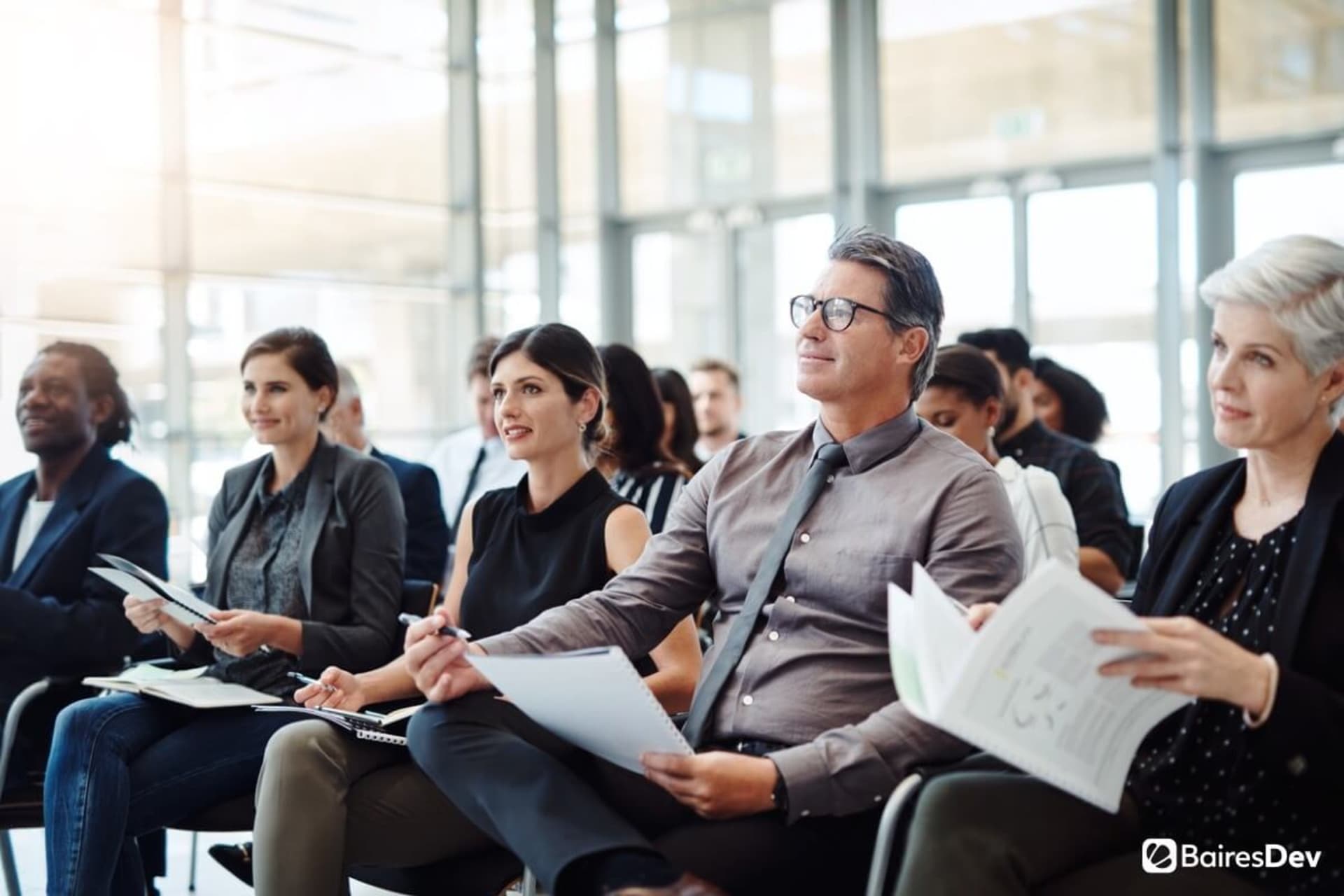Approximately half of all employees will need reskilling by 2025, the World Economic Forum predicts.
In the past few years, the need for corporate learning and development (L&D) has become all the more underscored. This is in part due to the pandemic, which accelerated the need for high-tech and other skills necessary for remote work. But our workplace was already undergoing a transformation. And attracting, retaining, engaging, and otherwise skilling employees has become a pivotal part of business strategies.
The World Economic Forum also finds that as of 2020, 42% of core skills related to job functions will change by 2022. So, how do businesses upskill, reskill, and simply skill workers?
What Skills Will Workers Need?
According to WE Forum, these are the ten most important skills employees need today:
- Analytical thinking and innovation
- Active learning and learning strategies
- Complex problem-solving
- Critical thinking and analysis
- Creativity, originality, and initiative
- Leadership and social influence
- Technology use, monitoring, and control
- Technology design and programming
- Resilience, stress tolerance, and flexibility
- Reasoning, problem-solving, and ideation
Most important, however, is the concept of lifelong learning. Because of this fact, perhaps, budgets for learning and development have increased by 57%, the 2021 LinkedIn Workplace Learning Report finds.
How Can Employers Help Workers Upskill?
It’s the responsibility of employers to provide opportunities for workers to gain skills, learn, and grow. No longer do employees need to rely on outside resources for help — often, learning is built into the infrastructure of companies. These are some of the ways employers will be equipping workers with the competencies they need now and in the future.
Immersive, High-Tech Learning Opportunities
Using augmented reality (AR) and virtual reality (VR), employees are better able to engage with their environments — real or projected — and ostensibly learn by doing, without actually doing, in a lower-stakes environment. More and more, these tools are being applied to training, onboarding, and upskilling opportunities.
But AR and VR aren’t the only technologies that are overtaking the world of corporate learning. Today, high-tech experiences are paramount to establishing an environment that is conducive to learning and gaining new, critical skills, especially as an increasing number of people are working remotely.
Online Platforms
A decade after the first online course was opened to public consumption, massive open online courses (MOOCs) involve approximately 220 million students. Coursera alone boasts 97 million learners and 6,000 courses.
MOOCs aren’t just a tool for independent learners. Many businesses have adopted them as tools for upskilling. Some are offering full libraries of courses to workers or reimbursing them for their enrollments. These are serving as excellent resources for learners of all types and ages, allowing them to gain the competencies to both succeed in their current roles and become equipped with the knowledge necessary to grow in their careers.
Learning for Everyone
Upskilling isn’t just for interns and entry-level employees nor is it solely for full-time staff. Corporate learning is the job of everyone, from the assistant to the CEO. It’s for freelancers, gig workers, part-timers, and in-house employees.
As we move into a new age of learning, where the majority of education is taking place digitally or online, it’s not just reactive, either. It’s also about being proactive, training everyone to succeed in a landscape that is dramatically changing. There are changing expectations, and even leaders will need new competencies to succeed and keep moving forward, bringing their businesses to new heights.
A Focus on Learning Communities
“Learners who use social features — Q&A, course shares, and learning groups — watch 30x more hours of learning content than learners who don’t,” LinkedIn’s 2021 Workplace Learning Report states.
Corporate learning isn’t a solo activity. People want to engage and be social with one another, and why should education at a business level be any different? Companies, MOOCs, and other vehicles for corporate-related education and training are now looking for ways to motivate employee-students by enabling them to learn together. It’s about community and bringing people together — people who may have different skills and perspectives.
Personalization
At the same time, an individualized approach is becoming essential to both engaging workers and helping them learn. This isn’t at odds with community-centered learning — the 2 approaches can go hand in hand. People can gain skills and knowledge using a means and approach that make the most sense to them, while also doing so alongside their peers.
AI is proving vital to personalizing the learning experience, adapting courses and training based on the needs and skills of each student, their goals and objectives, their interests, and their particular job functions.
Diversity and Inclusion
Diversity and inclusion are significant parts of the corporate learning environment. Today, 92% of business leaders believe that a strategic workforce education program can help their organizations meet their DEI goals.
DEI is the focus of many of today’s recruitment efforts. It’s also a critical part of learning initiatives in the workplace. This is why leaders are incorporating diversity and inclusion into the fabric of corporate training, as well as making it a goal of business efforts.
Benefits of a Learning and Development Strategy
As you can probably imagine, the benefits of a successful L&D strategy are significant. Among others, they include:
- Better engagement
- Less burnout
- Individual and organizational growth
- Fewer skills gaps
- Improved retention and employee satisfaction
- Greater productivity and efficiency
- A wider pool of talent
- More autonomy
- Increased transparency
- Cost savings
Together, all these benefits lead to a stronger company culture, one that fosters success at both an individual and corporate level. This is what is necessary for a sustainable workplace — one that employees contribute to, and, in turn, one that supports its employees.






